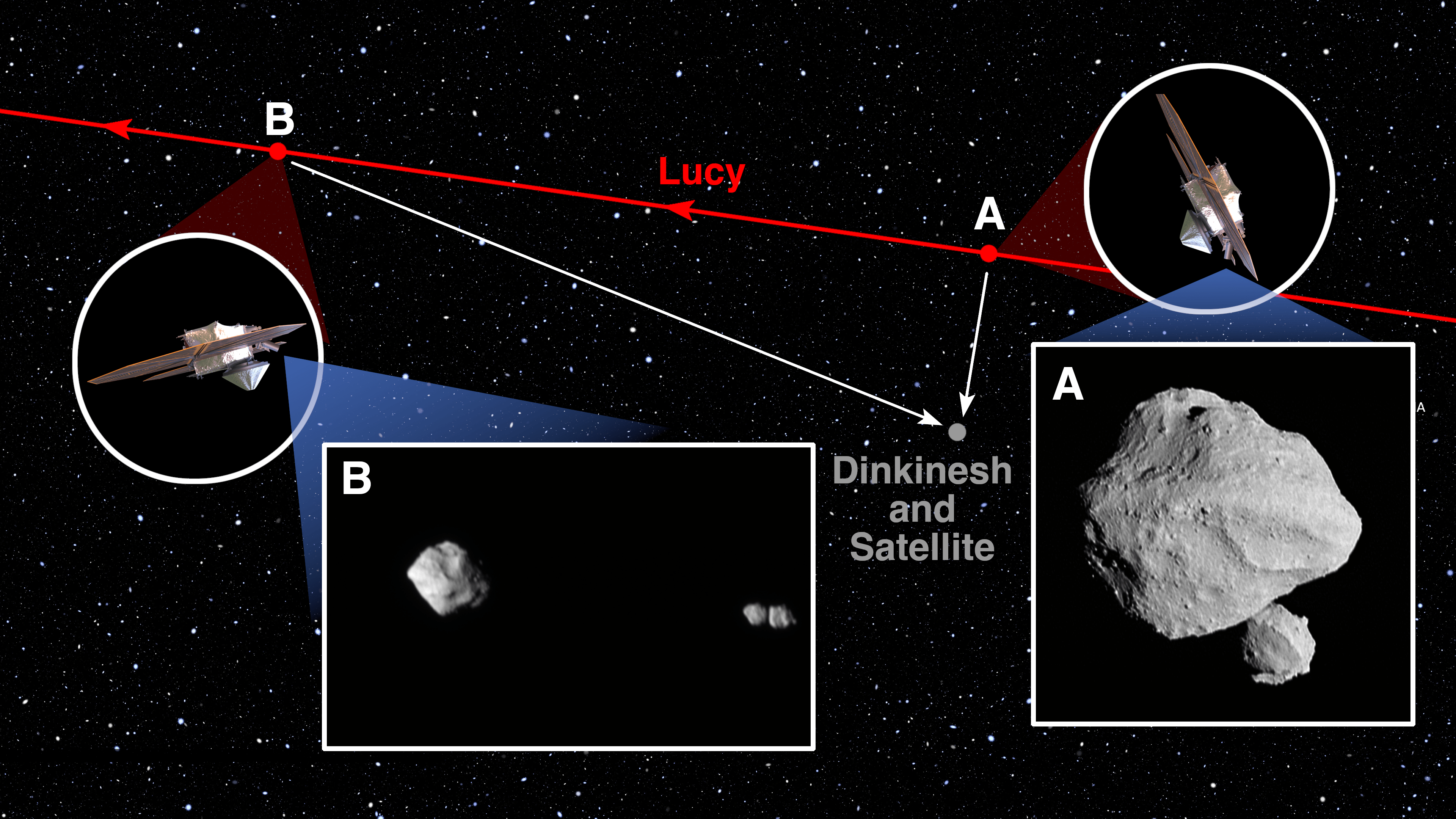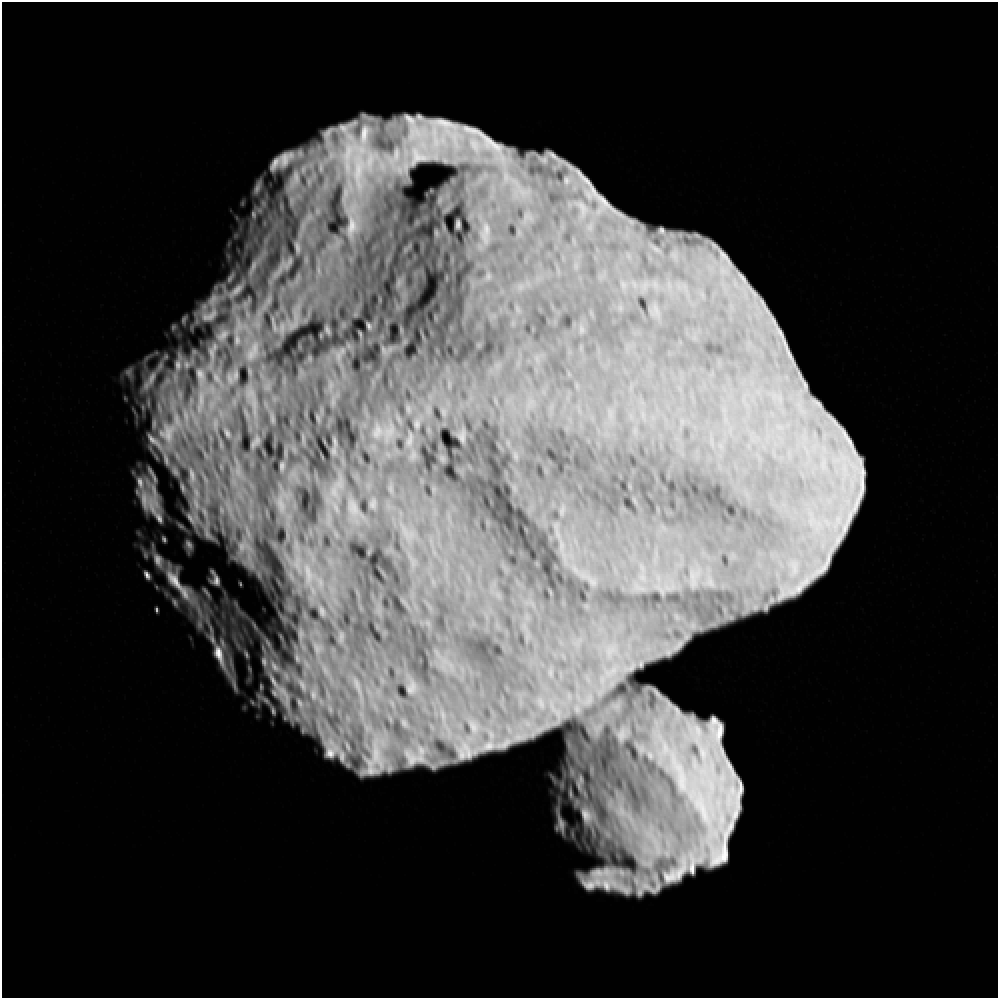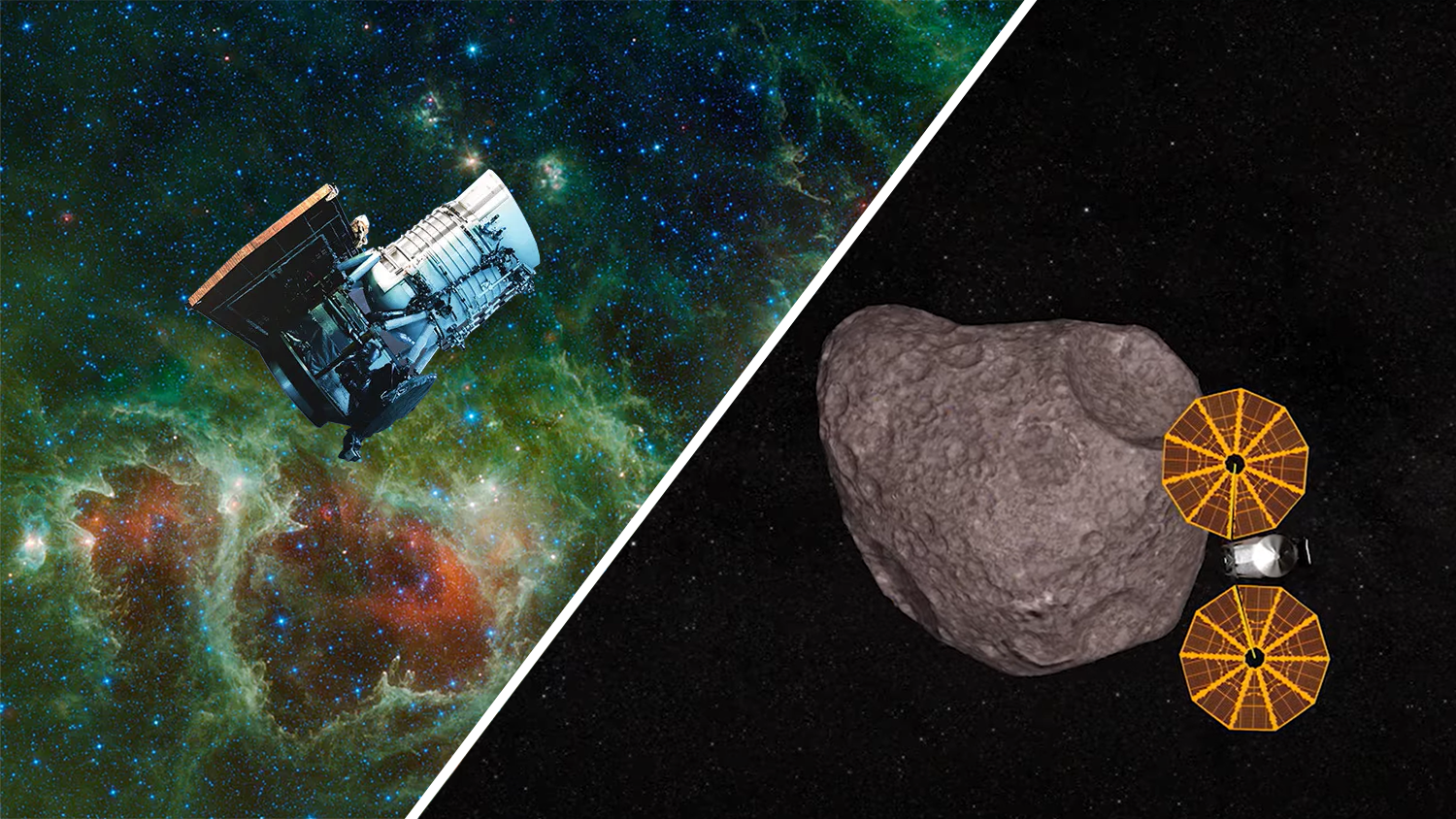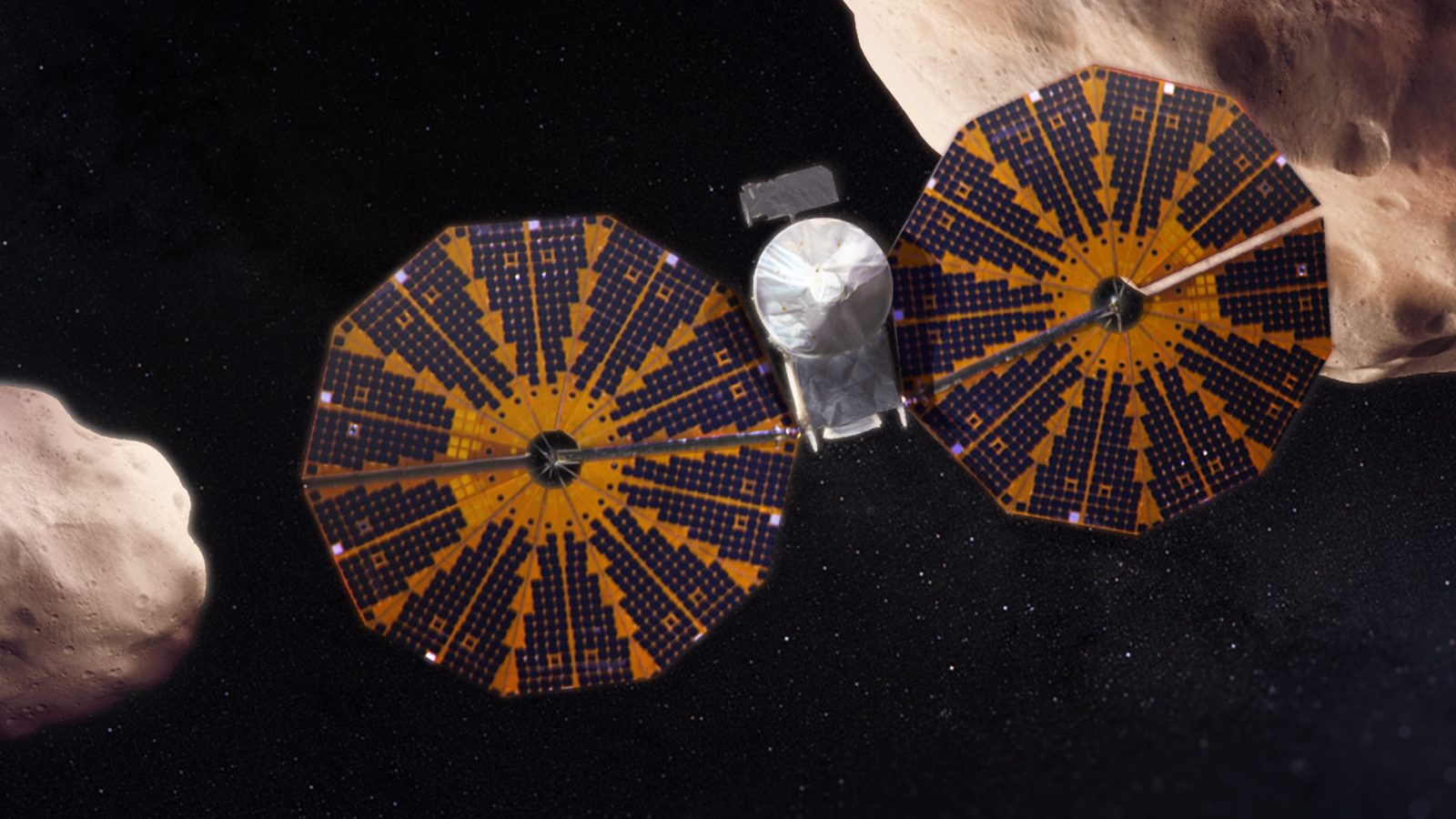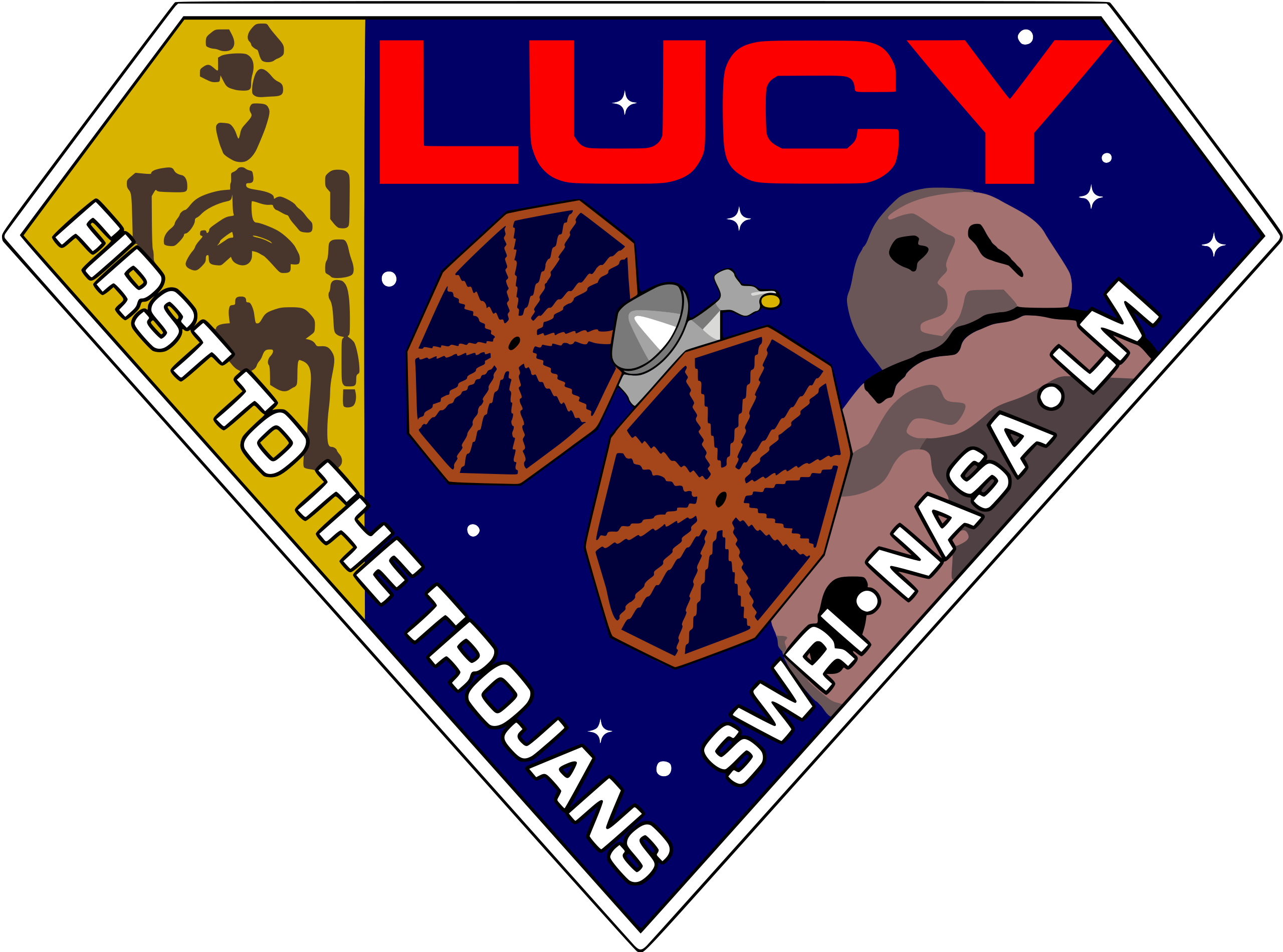
Lucy
The first mission to explore the Jupiter Trojan asteroids.
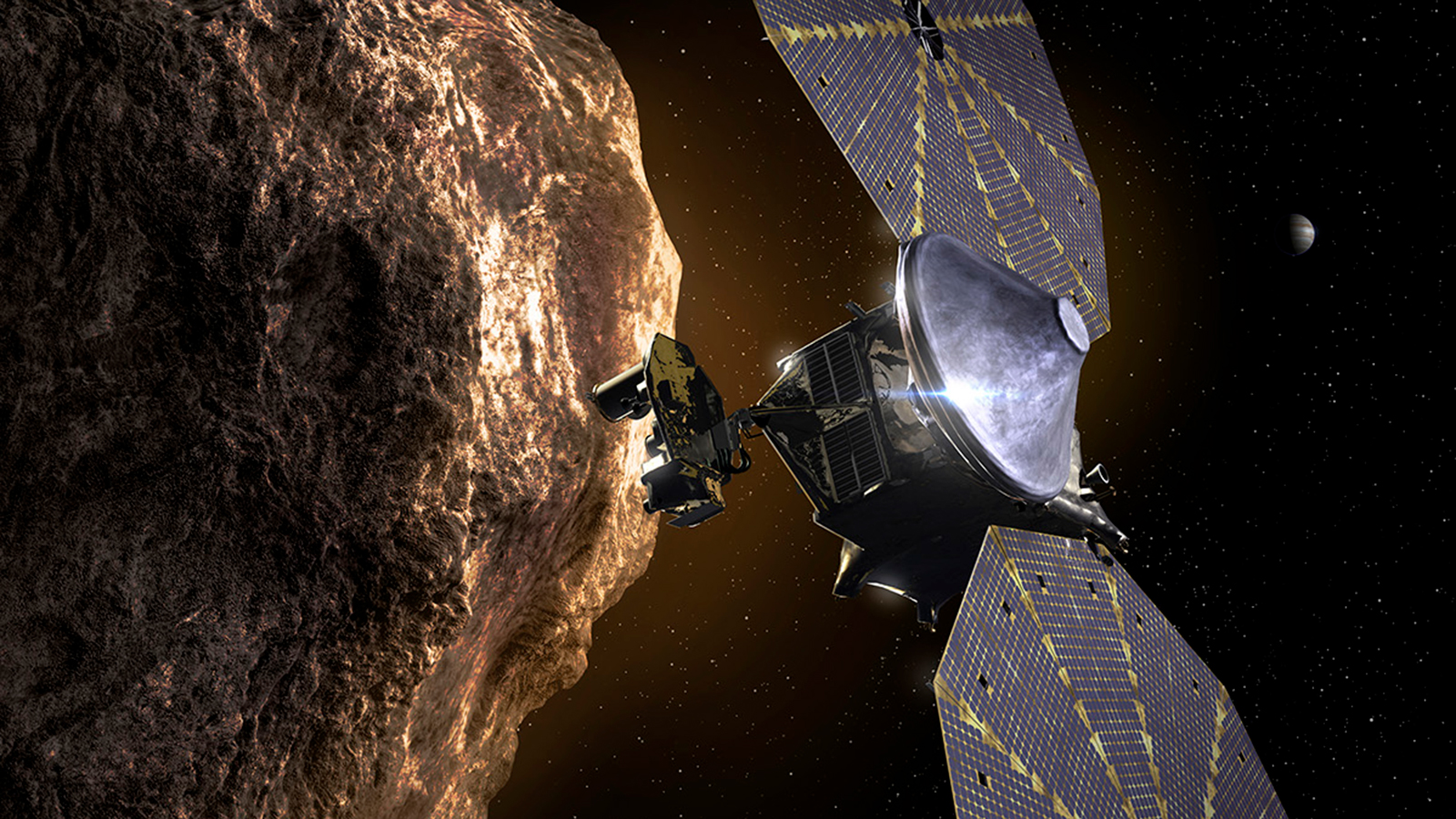
NASA’s Lucy Surprises Again
It turns out there is more to the “marvelous” asteroid Dinkinesh and its newly discovered satellite than first meets the eye. As NASA’s Lucy spacecraft continued to return data of its first asteroid encounter on Nov. 1, 2023, the team was surprised to discover that Dinkinesh’s unanticipated satellite is, itself, a contact binary – that is, it is made of two smaller objects touching each other.
Learn More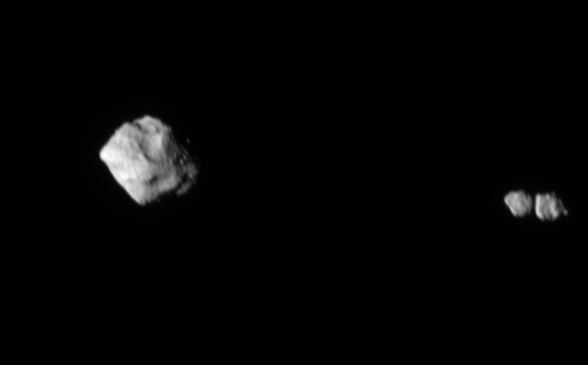
Lucy's Journey
Episode 1: Launch. Meet Lucy as she prepares for the first ever journey to the Trojan asteroids, a population of primitive small bodies orbiting in tandem with Jupiter.
Watch more episodesOverview
Lucy is the first space mission to explore a diverse population of small bodies known as the Jupiter Trojan
asteroids. These remnants of our early solar system are trapped on stable orbits associated with – but not close to – the giant planet Jupiter. Trojan asteroids orbit in two “swarms” that lead and follow Jupiter in its orbit around the Sun and are thought to be comparable in number to the objects in the main asteroid belt between the orbits of Mars and Jupiter.
Over its 12-year mission, Lucy will explore a record-breaking number of asteroids: it will by two (plus a newly discovered satellite) in the belt of asteroids that circle the Sun between the orbits of Mars and Jupiter, and then eight Trojans, which includes five asteroid targets and the satellites of three of those. Lucy also will fly by Earth three times to get a push from its gravity, making it the first spacecraft to return to the vicinity of Earth from the outer solar system.
Lucy is named for a fossilized skeleton of a human ancestor, which was named for the Beatles song "Lucy in the Sky with Diamonds."
Asteroid | Flyby Date |
|---|---|
Dinkinesh (pronounced DIN-ke-nesh) and an unnamed satellite (discovered during the flyby) | Nov. 1, 2023 |
DonaldJohanson | April 20, 2025 |
Eurybates ("yoo-RIB-a-teez" or "you-ri-BAY-teez") and its satellite Queta ("KEH-tah") | Aug. 12, 2027 |
Polymele ("pah-li-MEH-lee" or "pah-LIM-ah-lee") and its unnamed satellite | Sept. 15, 2027 |
Leucus ("LYOO-kus" or "LOO-kus") | April 18, 2028 |
Orus ("O-rus") | Nov. 11, 2028 |
Patroclus ("pa-TROH-klus") and its satellite Menoetius ("meno-EE-shus" or “meh-NEE-shus”) | March 3, 2033 |
The Lucy mission is named after the fossilized skeleton of an early hominin (pre-human ancestor) that was found in Ethiopia in 1974 and named “Lucy” by the team of paleoanthropologists who discovered it. And just as the Lucy fossil provided unique insights into human evolution, the Lucy mission promises to expand our knowledge of planetary origins.
Latest Lucy News
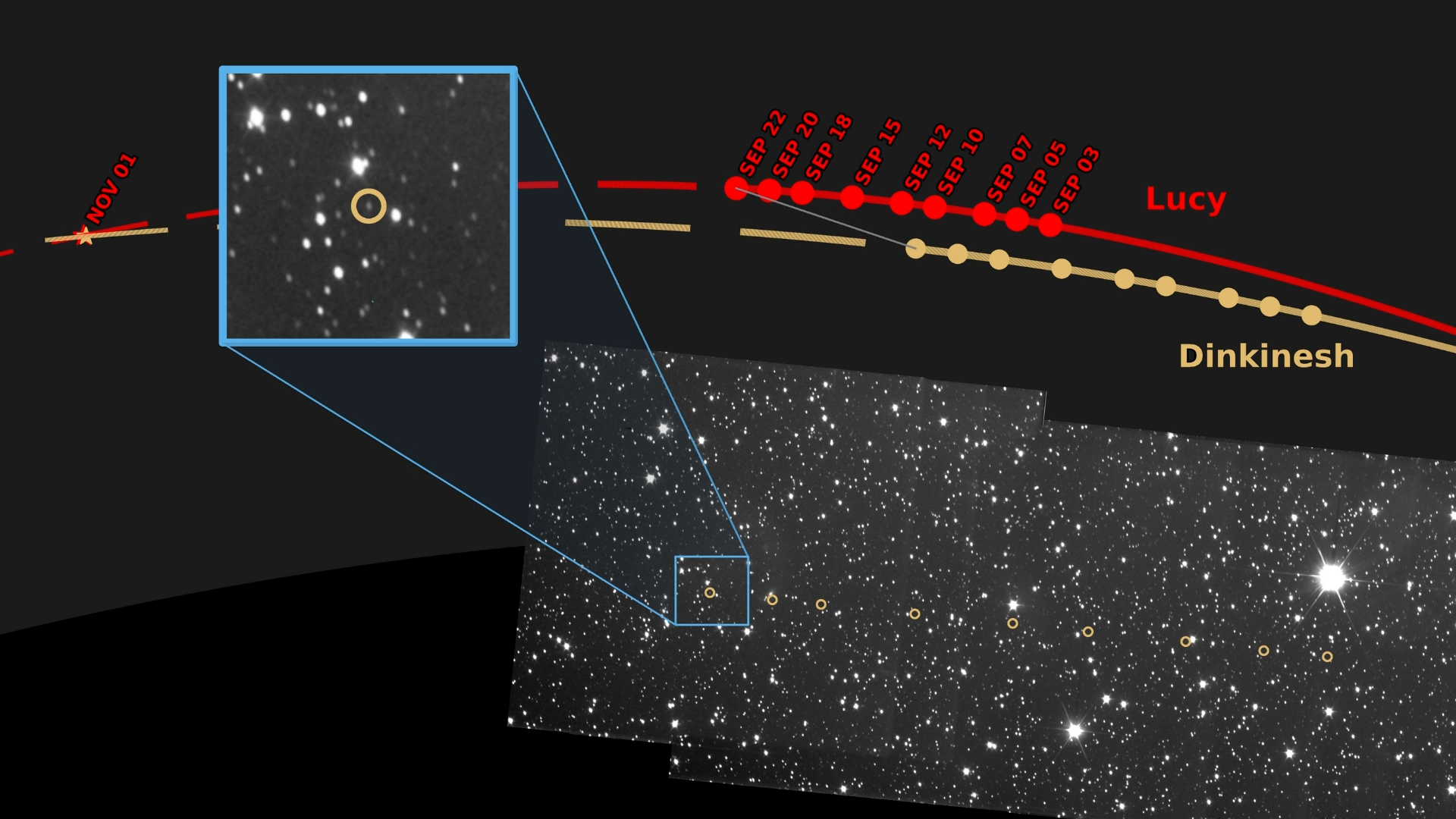
NASA’s Lucy Spacecraft Continues Approach to Asteroid Dinkinesh
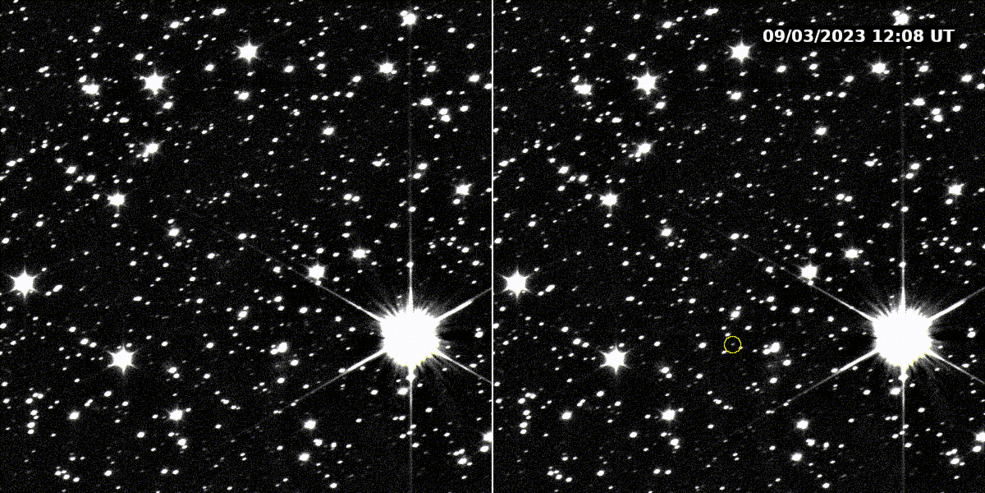
NASA’s Lucy Spacecraft Captures its 1st Images of Asteroid Dinkinesh
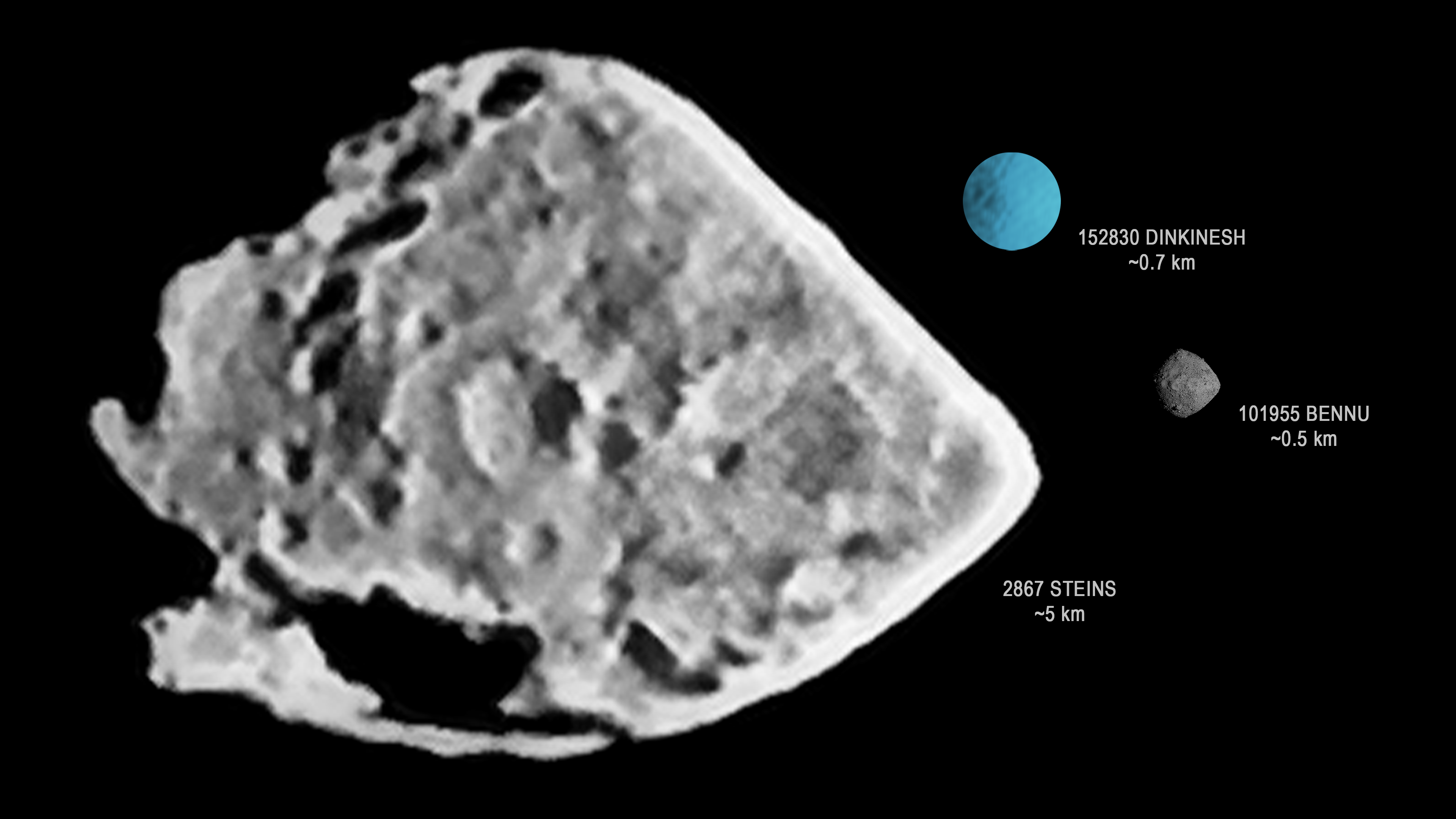
NASA’s Lucy Asteroid Target Gets a Name
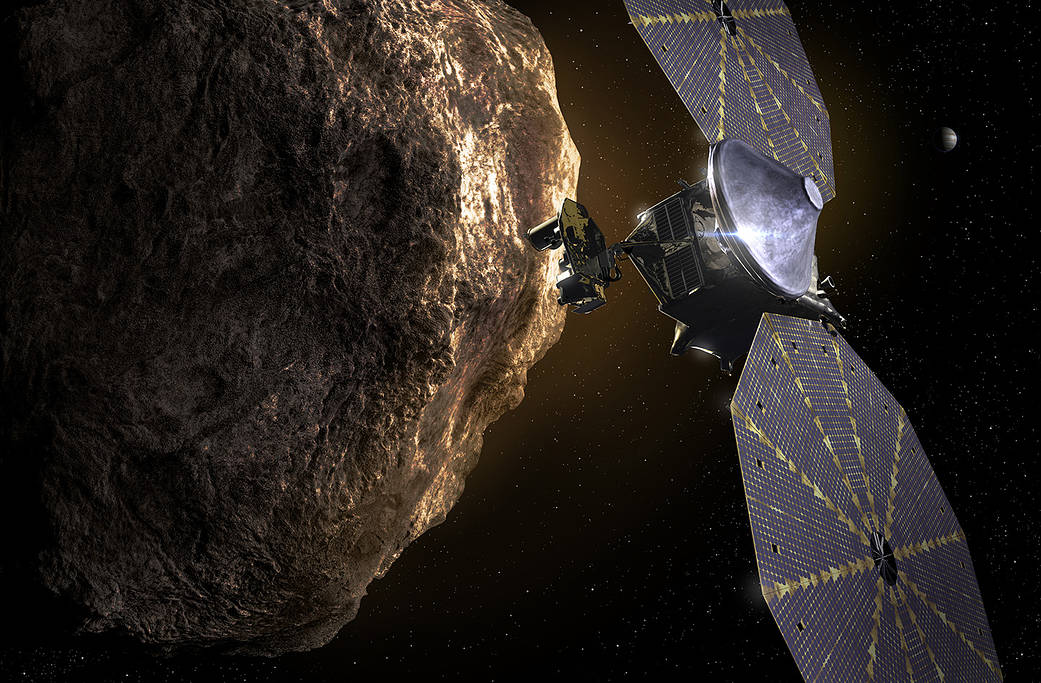
NASA’s Lucy Team Announces New Asteroid Target
Lucy Blog Posts
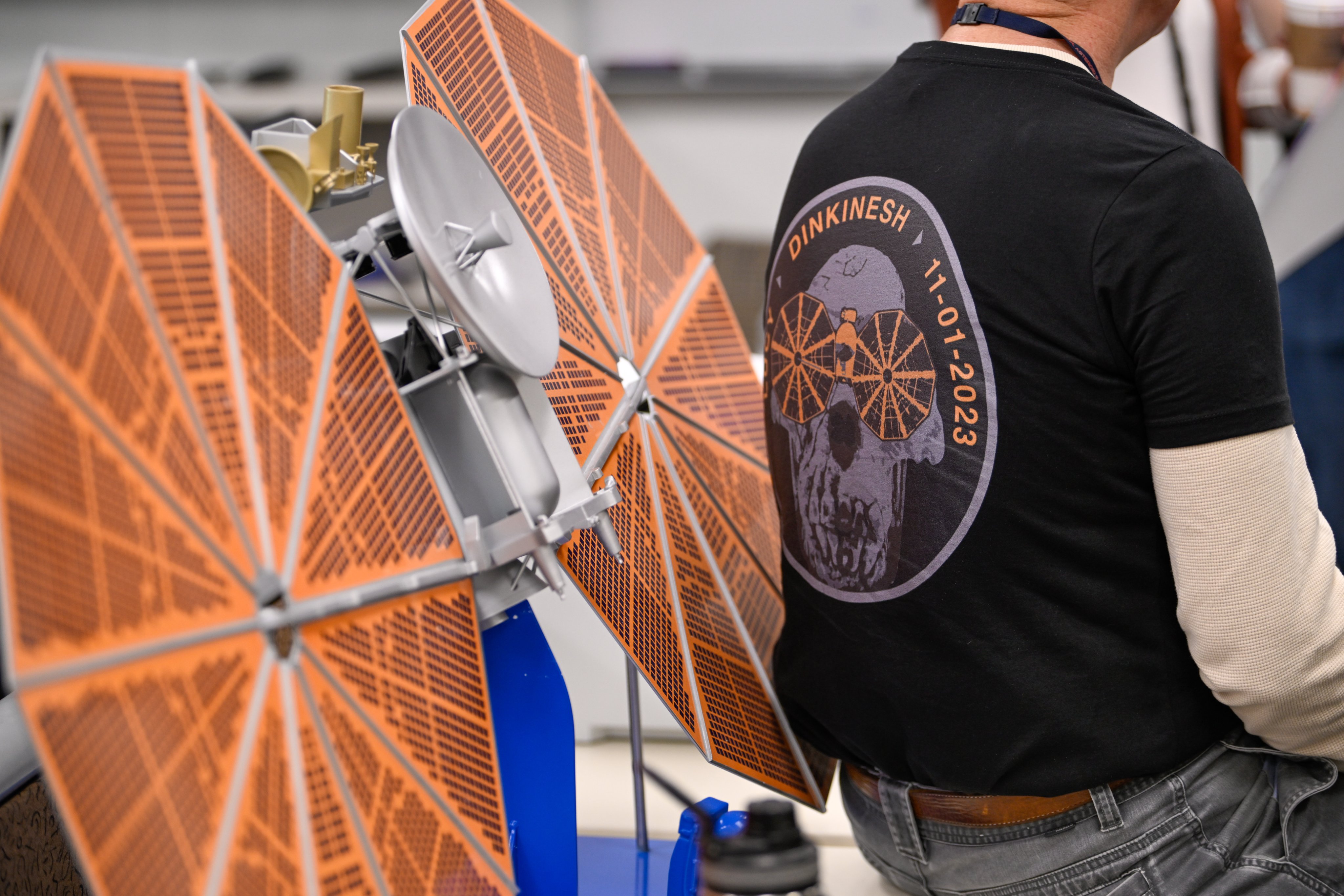
NASA’s Lucy Spacecraft Completes Asteroid Flyby
The Lucy operations team has confirmed that NASA’s Lucy spacecraft has phoned home after its encounter with the small main belt asteroid, Dinkinesh.
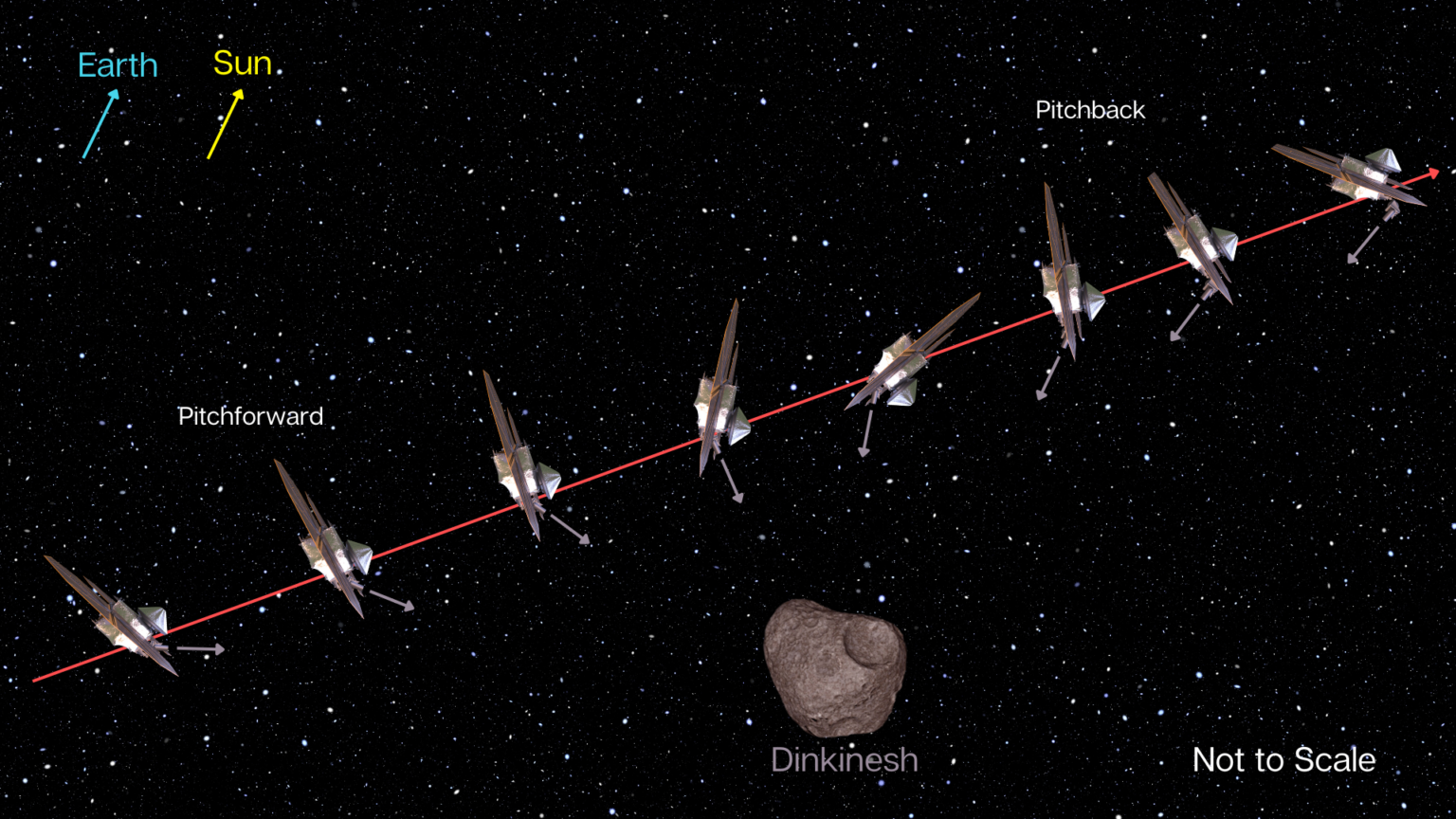
NASA’s Lucy Spacecraft Hours Away from 1st Asteroid Encounter
We are only a few hours away from the NASA Lucy spacecraft’s first close up look at the small inner-main belt asteroid, Dinkinesh. Dinkinesh is 10 to 100 times smaller than the Jupiter Trojan asteroids that are the mission’s main targets.
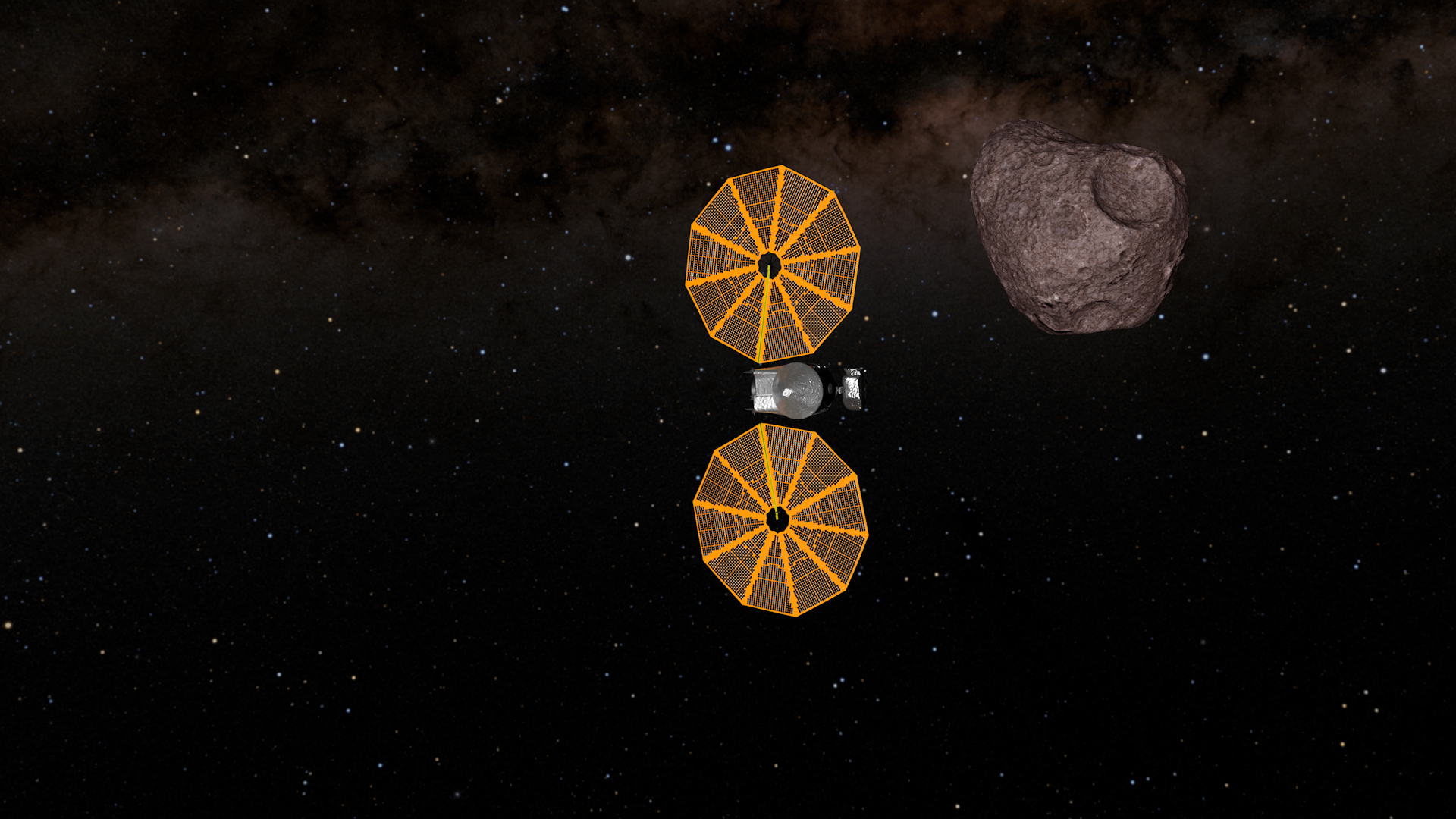
NASA’s Lucy Spacecraft Ready for 1st Asteroid Encounter
NASA’s Lucy spacecraft is on track for its first asteroid encounter on Nov. 1. Lucy’s optical navigation team has confirmed that the latest trajectory correction maneuver on Sept 29 accurately set the spacecraft on course for its flyby of the small main belt asteroid Dinkinesh.

